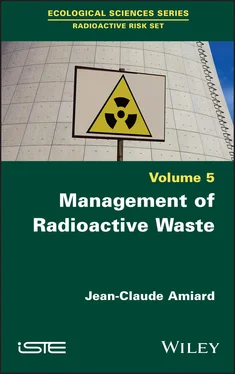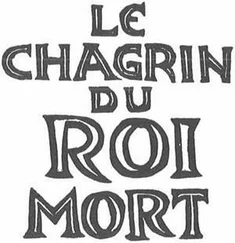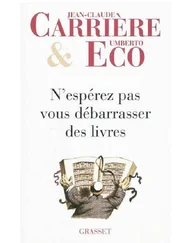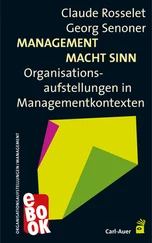What can we do with this radioactive waste? In the past, the ocean has served as a dumping ground for nuclear powers, which have immersed tens of thousands of radioactive drums. This time is fortunately over. Some eccentric people have suggested dropping them into space. Fortunately, the idea was not pursued. The solution now being considered for the most dangerous waste is to bury it in deep layers of clay, granite, salt or tuff, hoping that nature and geology will compensate for the weaknesses of human technology [AMI 13]. Sweden was the first nation to choose an underground storage site. All other countries, faced with the concerns of their populations and the vagaries of political changes, have postponed their decisions. On the contrary, in the United States, the suspension of the Yucca Mountain storage project in Nevada, which was ready to open, is a sign of the American administration’s desire to listen to the public. However, the State must find a new solution.
Since no alternative solution is yet mature, we must take our time in making a decision that will commit humanity for a long time. France, like Canada, Switzerland and Japan, has made the principle of reversibility central to its doctrine. On the contrary, Sweden and Finland do not require it, and the United Kingdom is still considering it. It is not only a question of being able to recover radioactive packages, but of leaving the decision-making process open and giving it back to the political institutions. Parliament has once again become the master of nuclear waste management and future generations have the guarantee that nothing will be decided inescapably. The approach is virtuous. Let us hope that it is not an admission of powerlessness in the face of an insoluble puzzle [AMI 13]. It should also be emphasized that this postponement amounts in practice to leaving to future generations the care to manage and pay for the waste produced by the present generation.
Those responsible for the civilian and especially the military use of nuclear energy have in the past been very unaware of the seriousness with which the problem of nuclear waste is treated today. For example, the Hanford site in the United States was heavily polluted by unauthorized dumping during intensive plutonium production after World War II. Recently, six underground tanks leaked. In the former Soviet Union (USSR), waste in the form of highly active liquid solutions was injected directly into deep storage [MAC 96]. The United Kingdom in particular, but also other countries, and even France, have thrown drums of waste into international waters, a practice that is now prohibited [CAS 02].
Nuclear energy has been questioned almost since its inception and one of the main problems concerning its social acceptability in the world is the management of nuclear waste [ROD 17]. It is therefore imperative that nuclear nations manage radioactive waste in an exemplary way.
1.2. What is radioactive waste?
A few definitions should be kept in mind. Radioactive waste is radioactive material for which no further use is planned or envisaged. Ultimately radioactive waste is radioactive waste that can no longer be treated under current technical and economic conditions, in particular by extracting its recoverable part or by reducing its polluting or dangerous nature (French Environmental Code, article L 542.1-1). Conversely, if a radioactive material also contains radionuclides, it has a potential future use. This is the case for depleted uranium or spent nuclear fuel that can eventually be reused.
A radioactive substance is a substance that contains radionuclides, natural or artificial, whose activity or concentration justifies radiation protection control. The radionuclides contained in radioactive waste can be of artificial origin, such as cesium-137, or natural origin, such as radium-226.
Radioactive waste has three main characteristics, the type of radionuclide, the activity and the half-life. The type of radionuclide contained is related to the radiation emitted (alpha, beta, gamma). The activity is the number of atomic nuclei that spontaneously disintegrate per unit of time; it is expressed in becquerels (Bq). The half-life is the time required for the activity of a radionuclide in a sample to decrease by half [IRS 13a, IRS 13b].
1.3. Classifications of nuclear waste
Waste classification is not unique. Indeed, while the IAEA has provided broad guidelines for defining and classifying radioactive waste, each state is free to use its own nomenclature.
1.3.1. General information on the classification of radioactive waste
As regards the classification of radioactive waste, there are two main approaches: one by a waste management channel and the other by a waste production channel. The latter approach is partly inherited from the historical concept of radiation protection.
The management pathway approach often combines the activity and lifetime parameters of the radionuclides constituting the waste. This classification was recommended by the IAEA in the Joint Convention on the Safety of Spent Fuel Management and on the Safety of Radioactive Waste Management. This classification is used in France, Belgium and Spain. Sometimes this approach is based only on activity. In Canada, for example, there are only three main categories of radioactive waste (ILW, HLW and spent fuel), except for the specific management of waste from mines. In the Netherlands, the classification has a larger number of categories, but no distinction is made between short- and long-lived waste and consequently there are no plans for surface disposal. In Germany, the classification is based mainly on the exothermic character of the waste.
The production chain approach leads to a more complex classification, with specific chains for certain types of waste, and combining activity and lifespan. This is the approach of the United States, Japan and Sweden (in fact in Sweden, the two types of approach coexist). In Finland, a category is sometimes added for waste from hospitals, universities, etc.
There are also national specificities, as in Belgium, which treats 50% of the radium sources used in the world (the result of uranium mining in the Congo, which is historically Belgian), or in Canada, which has large uranium mines. Similarly, in France, it should be noted that there is no release threshold for waste containing, or likely to contain, only very small quantities of radioactive elements [AMI 13].
1.3.2. The IAEA’s recommendations
The IAEA proposes dividing radioactive waste into five categories, in addition to the category of waste considered as released (EW, Exempt Waste), according to two criteria, the amount of activity and the half-life of the radionuclide ( Figure 1.1). These categories are very short-lived waste (VSLW), very low-level waste (VLLW), low-level waste (LLW), intermediate-level waste (ILW) and high-level waste (HLW) [IAE 09a].
In certain circumstances, such as acceptance into a radioactive waste disposal facility, Waste Acceptance Criteria (WACs) may be established for certain radionuclides. WACs are quantitative or qualitative criteria that may include, for example, restrictions on the activity concentration or total activity of particular radionuclides (or types of radionuclides) in the waste, or requirements regarding the form or packaging of the waste.
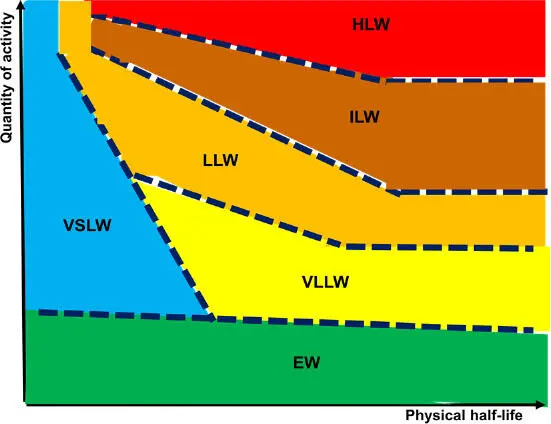
Figure 1.1. Proposed IAEA classification of radioactive waste (source: [IAE 09a]). EW: exempt waste; HLW: high-level waste; ILW: intermediate-level waste; LLW: low-level waste; VLLW: very low-level waste; VSLW: very short-lived waste. For a color version of this figure, see www.iste.co.uk/amiard/radioactive.zip
Читать дальше
